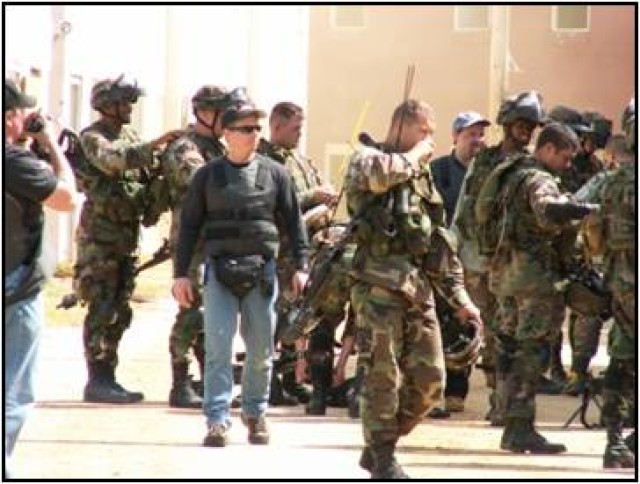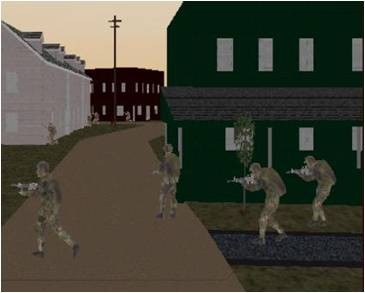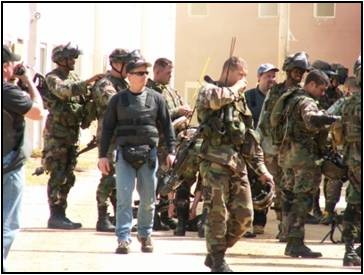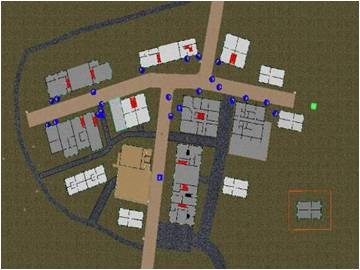Imagine that the Army developed a new and improved piece of equipment. If you were Mike Statkus, one question immediately would come to mind.
"So what'" Statkus said. "Is that really going to give you an advantage on the battlefield, or are you now too slow, too encumbered, and too uncomfortable to fight effectively because this new equipment is weighing you down'"
As Infantry Warrior Simulation (IWARS) Program Manager with the Modeling and Analysis Team, Technology, Systems and Program Integration Directorate of the U.S. Army Natick Soldier Research, Development and Engineering Center at Natick Soldier Systems Center, it's Statkus' job to ask all manner of "So what'" questions in pursuit of answers that will make Soldiers more mission effective on today's complex battlefields.
According to Statkus, more isn't always better for the Soldier.
"If we give you less of something," said Statkus, "perhaps that frees you up to be more lethal and more survivable. One great way to look at that trade space is with models and simulations."
For six years, a dozen operations research analysts at Natick have teamed with other agencies and international partners to build IWARS for examining those questions for Soldiers operating in a variety of battlefield conditions, across a spectrum of missions, while facing myriad threats.
"We were tasked with developing a tool that helps analysts dig deep into mission effectiveness," Statkus said. "But in order to build a computer simulation, you first have to understand how Soldiers move, shoot and communicate. Fire teams, squads and up to platoons are what we're generally interested in."
At the beginning, the IWARS team studied the performance of actual Soldiers at Fort Benning, Ga., by collecting hard-target engagement data and also looking at how situation awareness affects unit leader decision making. These studies assisted in methodology and algorithm development for IWARS.
"We're trying to understand the most complex platform on the battlefield, which is the Soldier," Statkus said. "It's a puzzle we still haven't completely solved, but we'll continue to keep chipping away at it."
The result was simulation software that can represent many scenarios involving dismounted Soldiers on a variety of terrain.
"You can now use the constructive simulation to put virtual Soldiers in dangerous situations and run it hundreds of times," said Statkus, "and gain insight as to whether a particular technology gives the Tactical Combat Unit a significant advantage or not."
Statkus offered another possible scenario as he sat in an office at NSSC.
"If a fire team of Soldiers busts through this door and has to clear this room of opposing forces, how long will it take'" Statkus said. "How many shots will they fire' What's their probability of kill' What's their probability of survival' It depends on a variety of factors."
Scenarios in IWARS can vary in length and complexity and can feature up to 100 virtual Soldiers.
"It can take several weeks to build a scenario with all the attendant behaviors and tasks," Statkus said. "Once you have a scenario built, a few runs could take mere minutes or it could take several hours in batch mode overnight. It depends on the complexity of the scenario, the number of entities on the battlefield, and the data output the analyst has pre-programmed."
After the simulations are run, then the work really begins for the Modeling and Analysis Team.
"Obviously, the simulation doesn't answer the question for you," Statkus said. "That's where the analysts really provide value. You have the output from the simulation, but then you need the team of analysts to help answer the 'So what'' question."
While IWARS officially concluded as an Army Technology Objective in September 2010, improvements to the simulation will be driven by analysis needs in the future.
"IWARS is filled with some very rich methodologies," Statkus said. "However, there are some rudimentary capabilities that could always have been enhanced. It depends on the questions we are tasked to answer and the capabilities we need moving forward."
No doubt, but the IWARS Development Team, which also included researchers, analysts and software engineers from the Army Materiel Systems Analysis Activity, the Army Research Laboratory - Human Research and Engineering Directorate, and Technology Solutions Experts, Inc., won an Army Modeling and Simulation Award for Fiscal Year 2010 for IWARS Version 3.0.
"IWARS 3.0 featured a number of enhancements," said Statkus, noting the inclusion of scouts, medics and engineers, and Soldiers interacting with vehicles. "It was a great honor to be recognized by the Army M&S community for our team's achievement."
Statkus also noted that "IWARS has been deployed across the DoD services as well as to our international partners. So there are folks in the S&T community beyond Natick who are putting it to good use."
Statkus and the rest of the IWARS team won't rest on their laurels, however. Instead, they are applying their analytic horsepower to assist product development teams at Natick.
"The Modeling and Analysis Team is here to support our technologists and materiel developers, whether that entails using IWARS or any of a variety of other models and tools that are available in the community," Statkus said. "Our phone has been ringing off the hook with requests for help."






Social Sharing